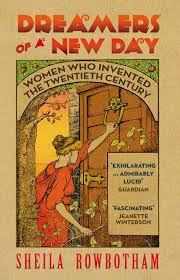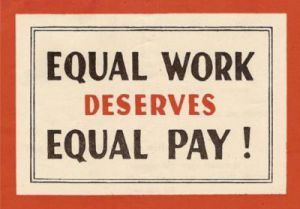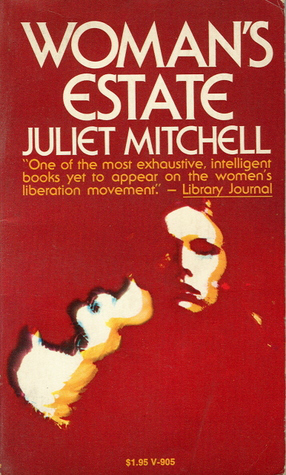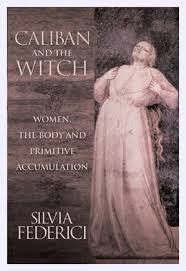Stuart Jeanne Bramhall's Blog: The Most Revolutionary Act , page 1306
February 2, 2016
Arkansas’s Unlikely Environmental Activists
The Natural State of America
Written and produced by Brian Campbell (2010)
Film Review
The Natural State of America is an inspiring documentary about an unlikely group of Arkansas environmental activists who take on their rural electric cooperative for spraying toxic herbicide in the Ozark highlands.
The Newton County Wildlife Association (NCWA) was first formed back in the 1970s, when they took on the US Forest Service over their plan to spray Agent Orange to destroy hardwood Ozark forest to benefit private timber interests seeking to replace it with quick growing pine.
Their success in obtaining a court injunction against the Forest Service inspired environmental activists in Washington and Oregon to undertake similar campaigns – resulting in an ban on domestic Agent Orange use in 1978.
A few years later the NWCA blocked the Army Corps of Engineers from damming the Buffalo River.
In recent years, the NWCA has joined with the Organic Growers Association and back-to-the-land homesteaders to protest a 2006 decision by the Carroll Electric Cooperative to spray toxic herbicides without consulting their membership.
Prior to watching this film, I was unacquainted with the pristine natural beauty of the Ozark region or the wealth of medicinal herbs found nowhere else in North America. I was also intrigued by the unusual personal profiles of the activists and their intimate knowledge of the geology and natural history of the region.
That being said, the film’s soundtrack was the high point for me. I’m pretty passionate about blue grass.
*Agent Orange is an equal mixture of 2,4,5-T and 2,4-D that was used by the US military to defoliate the jungle during the Vietnam War. Thousands of GIs who were exposed to it developed cancer, autoimmune and neurological disease and other health problems and have seen major birth defects in their children, grandchildren and great-grandchildren. In 2014, the EPA generated major controversy by approving a new Dow herbicide containing a combination of 2,4-D and glyphosate (Roundup) EPA approves new 2,4-D blend


February 1, 2016
Free the Move 9! NYC Stand in Solidarity in with Parole for The Move 9
*
*
Watch the documentary about Move at May 13, 1985
Panel Discussion February 12 in NYC. Featuring Ramona Africa, Mumia Abu-Jamal, Johanna Fernandez, Suzanne Ross and others
By Global Research News
Global Research, January 31, 2016
move9parole.blogspot.ca 14 January 2016
NYC Stand in Solidarity in with Parole for the Move 9 – Friday Night 2/12/16
On Friday night, February 12th 2016 join the move organization along with all our friends and supporters in the NYC area for an evening of solidarity for parole for Move political prisoners.
The program will be taking place at the Malcolm X Doctor Betty Shabazz center located at 3940 Broadway @ 165th Street.
The main focus will be on the upcoming May 2016 parole hearings for Janet, Janine, and Debbie Africa.
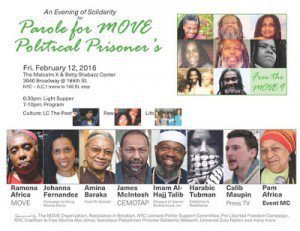 We have a great line up on the main panel which will include:
We have a great line up on the main panel which will include:Ramona Africa
Pam Africa
Mumia Abu Jamal
Amina Baraka
Caleb Maupin
Suzanne Ross
James McIntosh
Harabic Tubman
Iman al Talib…
View original post 83 more words


January 31, 2016
The Women Who Brought You the 20th Century
Dreamers of a New Day: Women Who Invented the Twentieth Century
By Sheila Rowbotham (2010)
Book Review
Dreamers of a New Day is about the first international feminist movement in the 1880s and the profound influence feminist organizers and writers had over 20th century life. Most of the women Rowbotham identifies by name are invisible to mainstream society – despite the critical importance of the major social reforms and institutions they fought for and won.
The period 1880-1929 was notable for the wide adoption of mass production and communication, the obliteration of rural life and the treacherous economic instability resulting in recurrent panics and recessions. These major social changes triggered a broad range of anti-authoritarian social movements, including socialism, anarchism, utopianism, populism and numerous other trade union and reform movements. As in the anti-authoritarian sixties, women naturally questioned why the new freedoms men were seeking shouldn’t apply to them, as well. This, in turn, led to the creation of numerous revolutionary and reformist women-led groups.
The Campaign for Social and Economic Equality
Contrary to what they teach in high school, the first women’s liberation movement fought for far more than the right to vote. Early feminists campaigned (and won) equal access to higher education and professions previously closed to them (eg medicine, law, pharmacy, veterinary medicine) and housekeeping arrangements that enabled mothers to meet their children’s needs while simultaneously pursuing careers. The period 1880-1929 saw a lot of experimentation with cooperative kitchens, laundries, bakeries and child care facilities.
The Feminist Campaign for Clean Drinking Water, Sanitation, Birth Control and the Shorter Work Week
The settlement house movement was a direct outgrowth of the feminist movement. Early women-run settlement houses typically offered communal kitchens, organizing facilities for women’s trade unions (the Working Women’s Union was formed in 1881), childcare and parenting advice. The settlement houses (Jane Adams’s Hull House in Chicago is the best known), which were often linked with universities, were directly responsible for the development of the new fields of social science and social work, which scientifically studied the needs of children and families.
These early feminist groups also led campaigns (which they won) for clean drinking water, sanitation services, clean safe streets, housing more conducive to children’s needs, an end to child labor and sweat shops, a shorter work week, subsidized state housing, and maternity benefits for destitute mothers (established in at least a dozen states before Roosevelt enacted the Aid to Families with Dependent Children program in 1935).
On the sexual front, feminists campaigned for (and won) sexual equality to men, including equal access to divorce and equal access to guardianship of children (prior to 1900 wives and children were viewed as the property of men), the right to dress as they pleased, engage in “free love,” legally access birth control and birth control information (illegal under the Comstock Law in the US and the Obscenity Law in the UK), the right to say “cunt,” “cock,” and “fuck” without going to jail, and medical reforms to reduce maternal mortality (in the 1920s, it was four times as dangerous to give birth as to work in the mines).


January 30, 2016
How Men profit from Women’s “Invisible Labour”
*
*
Women’s invisible labor is always unpaid of course.
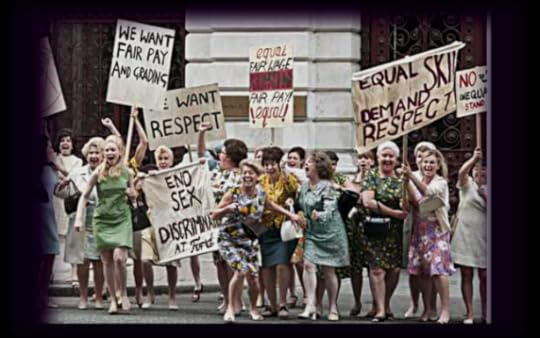 At work as at home, men reap the benefits of women’s “invisible labor” (by @schemaly)
At work as at home, men reap the benefits of women’s “invisible labor” (by @schemaly)via feimineach SORAYA CHEMALY (piece on QUARTZ):
“Women’s work” and its benefits for men. (Reminded me that someone said to me again the other day: “behind every great man stands a great woman”. We all know what that’s meant to mean but let’s unpick it…)
On any given day, one fifth of men IN THE US, compared to almost HALF OF ALL WOMEN DO SOME FORM OF HOUSEWORK. Each week, according to Pew, mothers spend NEARLY TWICE AS LONG as fathers doing unpaid domestic work. But while it’s important to address inequality at home, it’s equally critical to acknowledge the way these problems extend into the workplace. Women’s EMOTIONAL LABOR—which can involve everything from tending to others’ feelings to managing family dynamics to writing thank-you notes—is a big issue that’s rarely…
View original post 1,209 more words


January 29, 2016
The History of Women’s Liberation
Women’s Estate
by Juliet Mitchell
Pantheon Books (1972)
Book Review
Women’s Estate is about the history of the modern women’s liberation movement. Women’s liberation began in the US in the late 60s and quickly spread to Britain and the rest of the industrialized world. Mitchell compares and contrasts women’s liberation with the earlier feminist movement of 1880-1920, as well as tracing contemporary political influences that shaped it.
Mitchell traces the modern feminist movement to the publication of The Feminine Mystique by Betty Friedan in 1963. In 1966, Friedan would co-found National Organization for Women (NOW) with Gloria Steinem (see Did the CIA Use Gloria Steinem to Subvert the Feminist Movement?). Mitchell classifies NOW as a “reformist” group that limited itself to winning isolated reforms (affirmative action laws, legalized abortion and access to birth control, etc), as opposed to women’s liberation groups which sought to overthrow patriarchy and male-dominated society.
Owing to the immense media attention it received, women’s liberation was the most public revolutionary movement in history. According to Mitchell, its main influences were the mid-sixties black liberation movement, the student movement and the youth (aka “hippy”*) movement.
She traces the official origin of women’s liberation to a protest at Nixon’s 1969 inauguration in which female speakers were taunted with sexually explicit insults. This was the last straw in a long frustrating period in which male antiwar activists edged women out of decision-making and relegated them to typing and tea making.
By 1970, there were women’s liberation groups in all of the developed world, except for Ireland, Austria and Switzerland.
Although women typically experience the most extreme levels of poverty and oppression, the women’s liberation movement, like the earlier suffrage movement, was mainly led by middle class women. According to Mitchell, it’s common for the oppression of underprivileged women to be passed off as natural and unchangeable.
Mitchell devotes most of the book to an analysis of the politics of oppression and the cultural factors (especially so-called “family values) that cause women’s oppression to appear invisible.
In her view, this is why consciousness raising groups were so essential to women’s liberation. By openly sharing their negative treatment by men, women were astonished to learn other women had similar, often identical, experiences. This helped them to acknowledge their individual frustration and suffering was, in actuality, a political problem.
As Mitchell puts it:
The first symptom of oppression is the repression of words: the state of suffering is so total and assumed, it’s not known to be there.
*According to Mitchell, the hippies rebelled against social manipulation and emotional repression by the political establishment without seeking specific political change.


January 28, 2016
What Would A Real Discussion on Reparations Look Like?
Superb analysis of what an honest dialogue around reparations should look like – one that takes account of class differentiation among African Americans and the black “misleadership” class.

Have We Ever Had One?
What would a serious discussion on reparations look like? Will anybody ever come up with a realistic roadmap to get there, or is reparations talk just that –- all talk? Is reparations an answer to class politics, or is it the politics of a particular class? And what if we fought for millions of new green jobs, rolling back the prison state, guaranteed annual income, decent housing and free education but didn’t call it “reparations”?
Just what would a constructive and useful discussion of reparations for the descendants of Africans enslaved in the US look like. Certainly it would bear no resemblance to the nonsense emanating from Ta Nehesi Coates and others around the current presidential campaign.
The fundamental justice of the reparations proposition seems indisputable. Grievous harm was done to millions in the course of slavery, Jim Crow, the urban ghettos and the current neoliberal prison state. In slavery alone, the vast sums of capital generated by stolen labor on stolen land were essential to the building of 19th and 20th century US capitalism and US rise to global economic prominence. Surely victimized and exploited deserve to be made whole.
Bringing reparations for tens of millions from idea to reality however would mean reallocation of resources on a vast scale. Broadly defining politics as the methods and institutions human beings devise to conduct our collective affairs, making reparations actually happen is a huge political project requiring the support of significant constituencies other than African Americans.
But as Adolph Reed pointed out back in 2002, the advocates of reparations, some of whom claim to be part of a “reparations movement” seemingly cannot be bothered with the task of coming up with even the sketchiest plans, roadmaps, strategies to actually win the reparations they say they want and that we all need. Reparations then, seems to b e a cause you can “join” with nothing more than an empty declaration, and once you join the exclusive club all you get is the privilege of denouncing those who have not embraced reparations for not being as unapologetically black as you are.
In a January 2016 interview on Doug Henwood’s KPFA show posted elsewhere in this week’s issue of Black Agenda Report, Behind The News Adolph Reed extends the interrogation of reparations and the class politics of reparations.
Coates and others eschew class analysis and hold that that race, that white supremacy and systemic racial injustice explain the past and present, and that ultimately only reparations can cure these. Reed holds that reparations is not an answer to the politics of class, it IS the political preference of a very specific class –- the black misleadership class which has always positioned itself as brokers and spokespeople for the rest of us, and the administrators of any and all race based patronage, spoils, affirmative action, minority set-asides ad the like.
For the vast majority of African Americans, free college education, millions of new jobs, a living wage, universal health care (instead of Obamacare’s universal private insurance) and rolling back the prison state are great things and absolutely welcome whether or not they are labeled “reparations.”
Reed also questions the frequently heard reparations argument that since slavery, Jim Crow and the rest were racially specific that they can only be dealt with by racially specific remedies. One can point to the US prison state erected since 1970, which houses the largest number of incarcerated people of any nation in history. The fact is that millions, disproportionately black and brown have been imprisoned without a single racially specific statute or administrative rule. So if reparistas will not and cannot come forward with specific plans to win reparations, why can’t jobs programs and other redistributive policies be fought for and won which target specific groups without calling it “reparations?”
The questions that Reed raises would be the basis for a serious discussion of reparations if such a discussion ever happens. In a media campaign where the Republican front runner is a straightup demagogic buffoon, where one of the Democrats will allows followers to call him a “socialist” the way Barack Obama allowed the deluded to call him a peace candidate, an environmentalist and a civil liberties advocate, and the Democrat front runner is the contemptible Hillary Clinton serious and constructive discussions are not even supposed to happen.
Serious discussions about reparations will ask whether the heavy political lifting required can be accomplished at all under that name, and if it can, what it would look like. Serious discussion on reparation would take account of its class content and class differentiation among blacks, rather than ignoring it in favor of the fake racial solidarity that allowed the development of the black misleadership class over the last hundred years since Booker T.
The only where this kind of serious study, discussion and examination will take place will be the spaces we claim and create to examine our history, our failures and successes, and the work ahead. The January 8-10 Philly conference on the Black Radical Tradition was one such space. We must and we will create more like it.
Those critical examinations will take place in our public and private meetings and study groups, in churches and union halls and bars, in classrooms, in basketball courts, on back porches, in rec centers and in bedrooms. The people will have to organize and lead those discussions ourselves. We’ll have to do it without any help from the Atlantic or Ta Nehesi Coates, without grants from funders of the nonprofit sector, and without exclusive dependence on corporate social media.
Bruce A. Dixon is managing editor at Black Agenda Report and co-chair of the Georgia Green Party. Reach him via email at [email protected].
Source: What Would A Real Discussion on Reparations Look Like?


January 27, 2016
Witch Burning and Women’s Oppression
Caliban and the Witch
by Silvia Federici
AK Press (2004)
Free PDF download Caliban and the Witch
Book Review
Caliban and the Witch*discusses the critical role witch burning played in the enclosure movement that drove our ancestors from the commons.
Feudalism Characterized by Continuous Rebellion
As Federici ably documents, medieval Europe was characterized by nearly continuous rebellion by serfs against their slave-like conditions. According to Federici, it was only by introducing a reign of terror involving the execution of nearly 200,000 women that the ruling elite succeeding in preventing total insurrection.
In all European countries (both Catholic and Protestant), witch burning was accompanied by legislation expelling women from most occupations and severely restricting their legal and reproductive freedom. The control over women’s reproduction (including a ban on birth control, abortion and all non-procreative sex) was a direct reaction to the population decline caused by famine and plague. Their lower numbers enabled peasants and urban workers to cause an economic crisis by demanding higher pay and improved working conditions.
The True Purpose of the Inquisition
Contrary to what we’re taught in high school and college history classes, the true purpose of the Inquisition was to not to stamp out heresy but to end the continuous peasant revolts. The hundreds of heretical movements (eg the Cathars) the Catholic Church persecuted during the Middle Ages were actually political revolts aimed at creating genuine political and economic democracy. Women figured very prominently in the Cathars and similar heretical religions. In addition to exercising the same rights as men, they also led many food riots and other revolts against enclosure.
Although none of these insurrections succeeded in overthrowing class society, they were extremely effective in winning greater political and economic freedom for both serfs and proletarian workers in the textile industry and other crafts.
The First Worker-Run Democracies
According to Federici’s research, the strength of peasant resistance peaked between 1350 and 1500, due to a severe labor shortage resulting from the Black Death (which wiped out 30-40% of the European population), small pox and high food prices. Highlights of this period include Ghent, which created the first dictatorship of the proletariat in 1378, and Florence, which created the first worker-run democracy in 1379.
The mass refusal of peasants to work under slave-like conditions created a major economic crisis, which the ruling elite addressed through wars of acquisition against other European countries, the colonization of Asia, Africa, America and Oceania and the reimposition of slavery (both in Europe and the Americas).
*Caliban is the subhuman son of the malevolent witch Sycorax in Shakespeare’s play The Tempest.
A big shout-out to the reader who recommended this book to me. I loved it.


January 26, 2016
Jane Kelsey – full TPPA Speech Jan 26
New Zealand trade lawyer and activist Jane Kelsey explains what the TPPA text means for New Zealand when it is signed on Thursday the 4th of February next week, and what activists can do.


Last nights TPPA meeting « The Daily Blog

*
There’s nothing in this deal that benefits anyone other than the already wealthy. It locks NZ into being a garden for America’s food chain, which is fine for Farmers and the National Party, but kinda screws the rest of us.
Last nights TPPA meeting was incredible and sobering.
The level of bullshit the Government have used to cover over what the TPPA is really about and the ludicrous ways they’ve measured the economic impacts for NZ have never been so vigorously argued than last night.
The page views for the live stream were in the tens of thousands.
If you had viewed the discussion, you would have heard things never discussed by the mainstream media.
Like the GCSB mass surveillance, the issue of the TPPA isn’t left or right. No one wins by allowing the Government to sign us up to a deal that creates a de facto upper chamber to our Parliament which is controlled by American Corporations.
The economic gains are an illusion. The protections to our environment are a lie. The ability for Maori to uphold the Treaty has been terminally weakened. We will have to pay more for our medicines. We open ourselves up to be manipulated by American Corporations.
There’s nothing in this deal that benefits anyone other than the already wealthy. It locks NZ into being a garden for America’s food chain, which is fine for Farmers and the National Party, but kinda screws the rest of us.
The talking schedule continues around the country, if you have the opportunity to go and hear, you simply must.
The next protest action is 4th February.
Source: Last nights TPPA meeting « The Daily Blog


January 25, 2016
What are Men Thinking about Women?
With or Without You: What are Men Thinking about Women
Directed by Tom Sands and Ramsay S James (2012)
Film Review
In this highly amusing documentary, the filmmakers ask random men on the street a series of questions about women. They intersperse their answers with so-called “experts”* who have made a life study of male-female relationships.
The overall impression I took away is that men feel a strong expectation to talk about women in terms of their booties, boobs and legs. However most of the men in the film (including the so-called experts) share a strong expectation for women to fulfill deep-seated emotional needs and feel angry and bitter when women fail to do so.
Aside from some really bizarre and convoluted pronouncements, a few of the experts came out with some really valuable insights:
• Human courtship is contaminated by a range of political and sociological factors (I was disappointed the film failed to explore some of these.).
• A man who doesn’t fully know and accept himself is unlikely to have a successful relationship with a woman.
• A man who doesn’t know and accept his feminine side (so-called “feminine” traits such as empathy, nurturing, instinct and intuition) is unlikely to be successful in love.
• Men’s anger towards women nearly always stems from unresolved conflict within themselves or towards their mothers.
*Psychologists, psychotherapists, a sex therapist, a tantric master and an Anglican priest.


The Most Revolutionary Act
- Stuart Jeanne Bramhall's profile
- 11 followers



